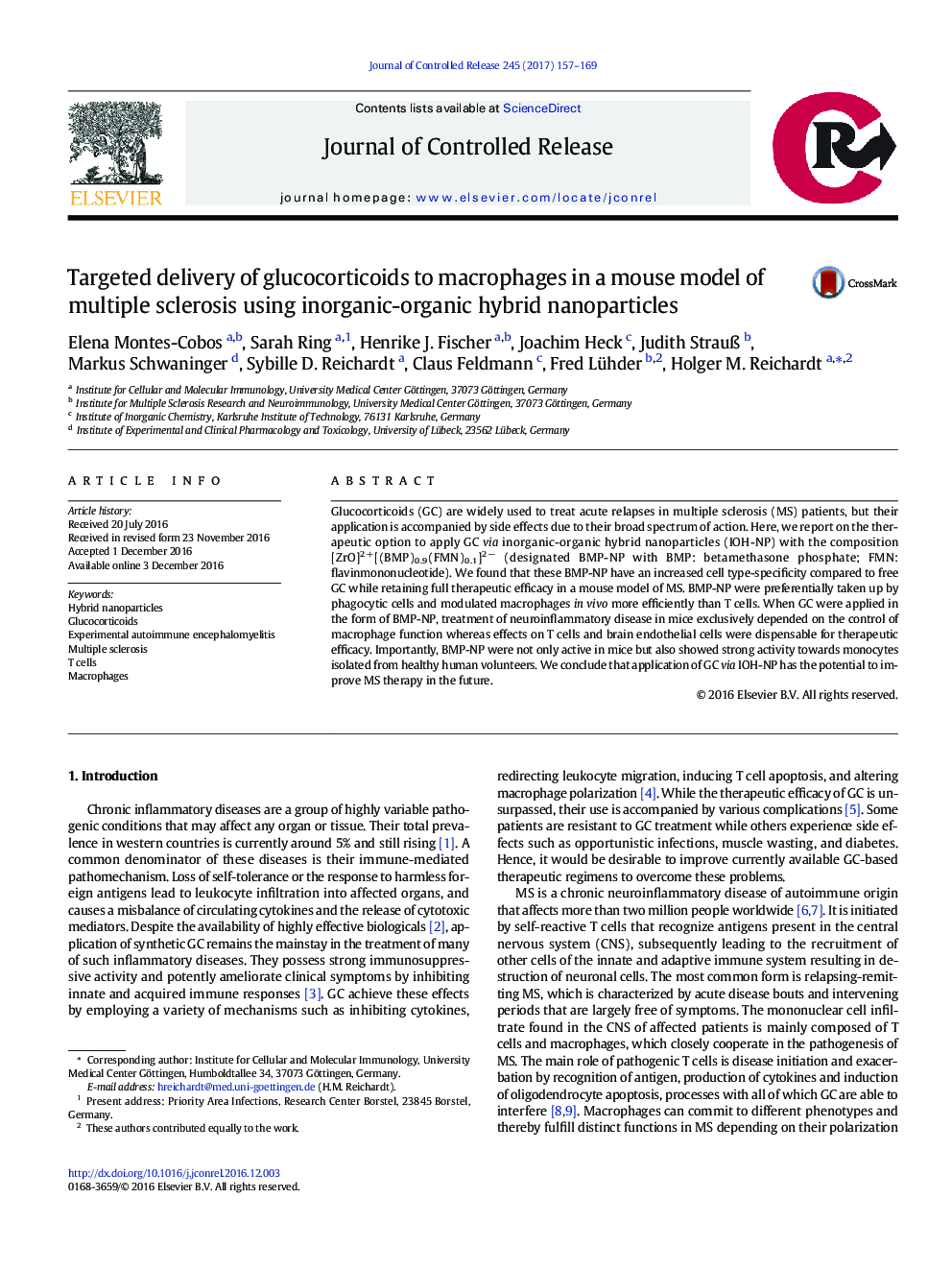| Article ID | Journal | Published Year | Pages | File Type |
|---|---|---|---|---|
| 5433952 | Journal of Controlled Release | 2017 | 13 Pages |
Glucocorticoids (GC) are widely used to treat acute relapses in multiple sclerosis (MS) patients, but their application is accompanied by side effects due to their broad spectrum of action. Here, we report on the therapeutic option to apply GC via inorganic-organic hybrid nanoparticles (IOH-NP) with the composition [ZrO]2+[(BMP)0.9(FMN)0.1]2â (designated BMP-NP with BMP: betamethasone phosphate; FMN: flavinmononucleotide). We found that these BMP-NP have an increased cell type-specificity compared to free GC while retaining full therapeutic efficacy in a mouse model of MS. BMP-NP were preferentially taken up by phagocytic cells and modulated macrophages in vivo more efficiently than T cells. When GC were applied in the form of BMP-NP, treatment of neuroinflammatory disease in mice exclusively depended on the control of macrophage function whereas effects on T cells and brain endothelial cells were dispensable for therapeutic efficacy. Importantly, BMP-NP were not only active in mice but also showed strong activity towards monocytes isolated from healthy human volunteers. We conclude that application of GC via IOH-NP has the potential to improve MS therapy in the future.
Graphical abstractDownload high-res image (78KB)Download full-size image
